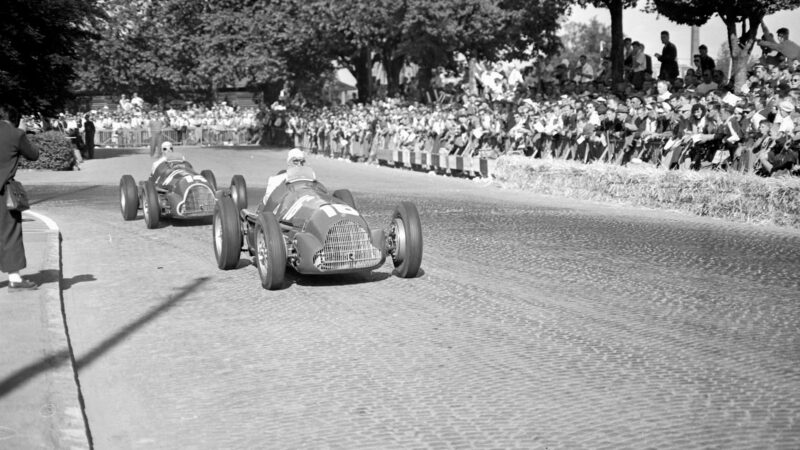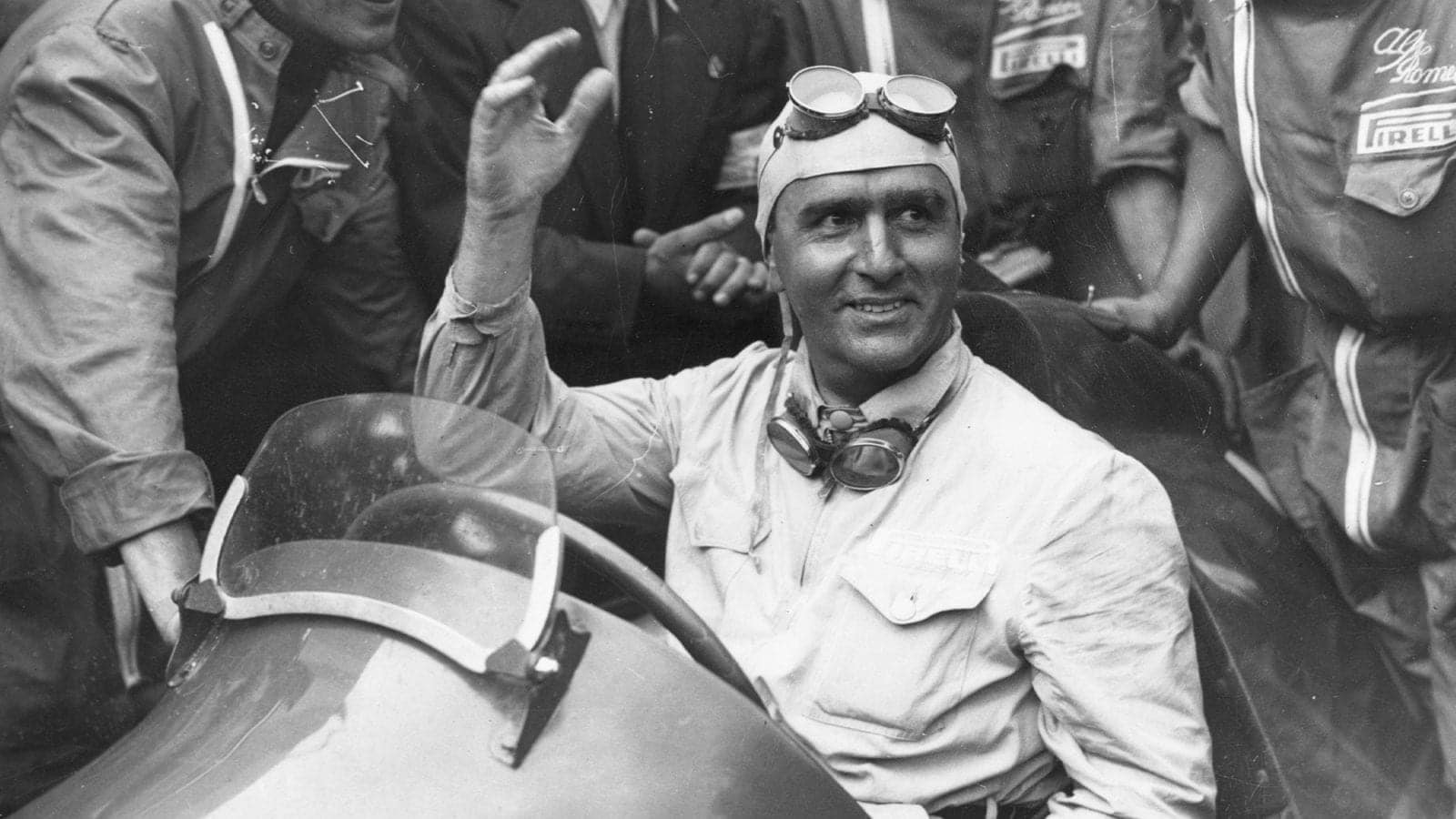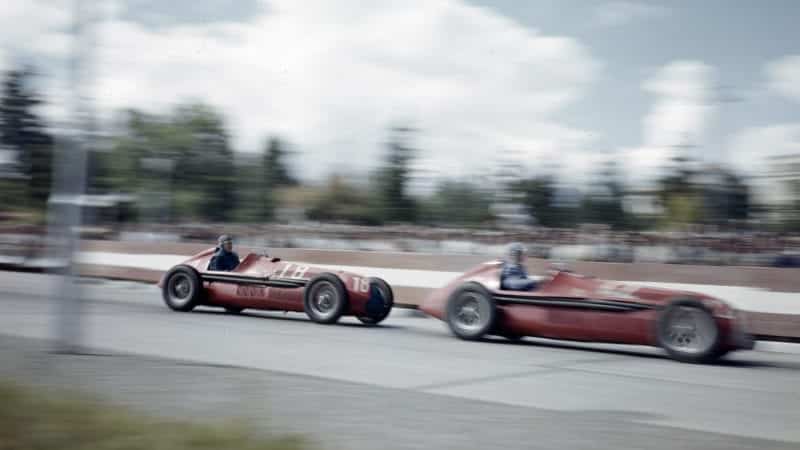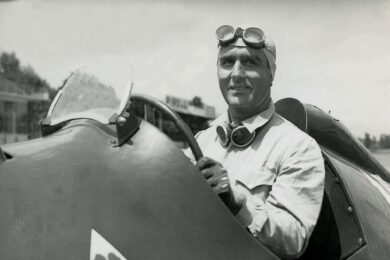When racing resumed after the war Farina was a member of the Alfa Romeo factory squad, his team mates Achille Varzi, Felice Trossi and Jean-Pierre Wimille. In 1946 he won the Grand Prix des Nations at Geneva, but left Alfa towards the end of the year and didn’t race at all in ’47. The following season he was back, now with a privately-entered Maserati, in which he won the first post-war Monaco Grand Prix. By the end of the decade the world had changed for Alfa Romeo. Varzi had been killed at Berne in 1948, and Wimille (in a Simca-Gordini) at Buenos Aires in early ’49; a few months later Trossi died of cancer. For the 1950 season it was to be the three Fs: Fagioli, Farina — and Fangio.
The incomparable Juan Manuel was the best driver in the team, but in 1950 there really wasn’t that much to choose between him and Farina. If Fangio won at Spa, Reims and Monaco, so his rival triumphed at Silverstone, Berne and Monza, and when the points were totted up Farina was World Champion.
The following year, though, he won only once, at Spa, and by now Fangio’s main opposition was coming from Ferrari’s Alberto Ascari. Farina could no longer be considered Italy’s top driver, and it did not sit well with him.
At the end of 1951 Alfa Romeo withdrew, whereupon Farina joined Ascari at Ferrari. It was a thankless task, ultimately, for coming were the years of Alberto in his pomp. From June ’52 to June ’53 he did not lose a single World Championship grand prix, and his team-mates were left to pick up the scraps. Farina won at the Nürburgring in ’53 only because Ascari’s car, for once, failed him.
There were, though, plenty of non-championship victories, and it was by any standards a fine season for a man of 47 — who had not a thought of retirement in his head.

Giuseppe Farina leads Juan Manuel Fangio at the 1950 Berne GP
ATP/RDB/ullstein bild via Getty Images
In fact, it would have been a good moment to call it a day. By 1954 Ascari had left for Lancia, leaving Farina as de facto number one at Ferrari, but he had a bad accident while leading the Mille Miglia and then, almost immediately, a much worse one in practice for the Supercortemaggiore sportscar race at Monza, when his car’s fuel tank was punctured by a broken driveshaft and the cockpit was enveloped in flames.
By the time he had got the car stopped Farina had been severely burned. “For the rest of that summer, and the winter as well,” he remarked, “I had to regard myself as an irritating invalid…” Convalescence was by no means complete by the beginning of 1955, but still he flew off to Argentina for the first grand prix of the year.
It was not a great time to be a Ferrari driver, for the ill-handling `Squalo’ was by then not competitive with the Mercedes W196, and Farina was increasingly dispirited.
At Spa, though, there was an opportunity for him to display all his warrior qualities, good and bad. While Fangio and Moss rushed away, Farina had a ferocious scrap for third place with the Lancia of Eugenio Castellotti.



